Labradoodle is the very first designer dog breed to ever be developed in the world.
Labradoodle is a crossbreed between the Poodle and Labradors they were conceived by the Royal Guide Dog Association of Australia as the better of the two breeds.
Sultan was the very first successful dog to display all the qualities of being a low shedding, funny and loving guide dog.
The reed as then gained a lot of popularity from the public though have not yet being recognized by any major kennel clubs. Since they are a mix there are no predicting how to puppies would come out to be.
At times the dogs have the undesired qualities with few good ones thus making it a surprise to breeders.
Puppies don’t have a proper specification as to how they look or what their qualities will be due to crossbreeding heritage.
It all depends on the dominant genes as even the multigenerational Labradoodle puppies can’t be expected to be like their parents.
They can be either hypoallergenic or medium shedders even if both the parents are low shedders themselves. They are generally very active and trainable so need to start physical and mental stimulation exercises from early on.
Adults can be of three sizes standard, medium and mini based on their poodle parent size.
They have three different types of hair coats straight or curly hair, fleece, and wool on their body. They have high energy levels with a need for moderate to high exercise requirements. They are generally friendly with playful nature that is similar to their parent dog breeds along with high intelligence.
Table of Contents
Labradoodle Pictures
Quick Facts
Avg. Weight:

Miniature – 15-30 pounds Medium – 30-45 pounds Standard – 45+ pounds
Avg. Height:
Miniature – 14-16 inches Medium – 17-20 inches Standard – 21-24 inches
Life Expectancy: 12-14 years
Dog Group: Guide Dogs
Colors: BlackBlue, Brindle, Black and Tan, Brown, Cream, Red, GoldenGray
Nickname: Doodles
At A Glance
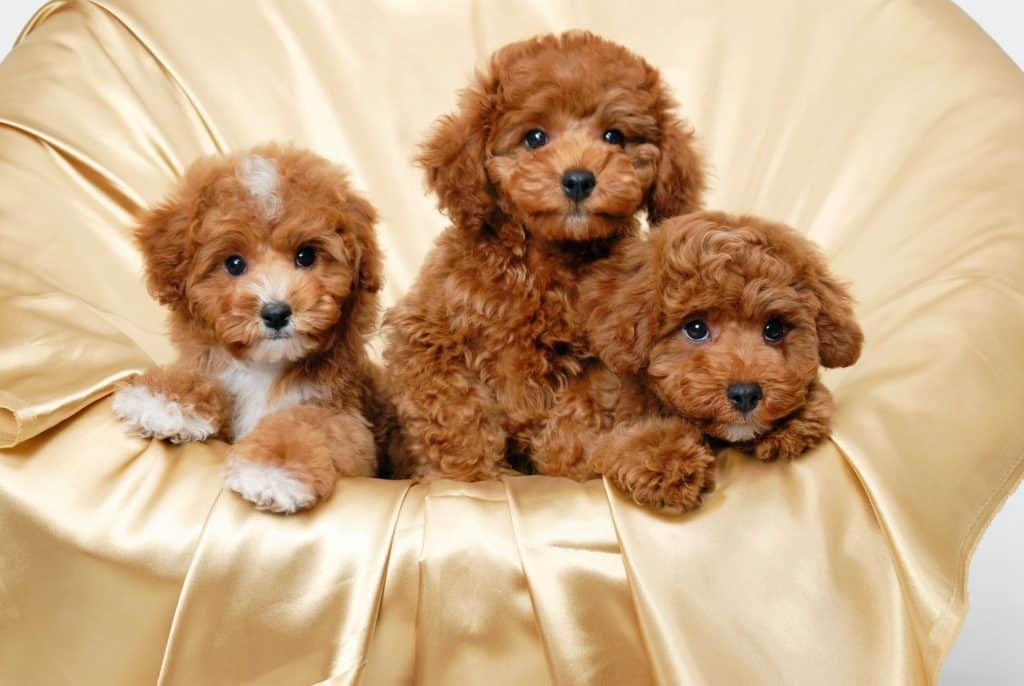
Size
They are of different sizes with three main sizes of Labradoodles like miniature, medium, and standard. They vary in different sizes and there is no predictable categorization of the puppies. They also have a varying coat that is also different from each and every dog.
Affection Level (5/5)
They are a very affectionate breed due to their genes from Labradors who are known for their affection. They are good family dogs and thrive in the company of people who they love and devote to.
They have loving temperament and get well along with other dogs and cats even. They love to please others and love the company of the children the most as they are fun to be around.
Apartment Friendly (2/5)
They aren’t suitable for living in the apartment as they need big spaces to be active.They are good for first-time owners but they need a lot of physical activity and space to roam around.
They are active and filled with energy that needs an outlet otherwise they can be destructive. Apartments with small spaces don’t fulfill their requirements are advised against for these dogs.
Cold Weather Tolerability (4/5)
They have a good tolerability to cold weather due to their coat which is a good insulator. Those who have wool type fur coat have the best protection against the cold. A single coat of hair can’t protect them from the frigid icy winds thus they shouldn’t be taken out in extremely low temperatures.
Hot Weather Tolerability (3/5)
They shouldn’t be out for long durations during summer to avoid the risk of overheating and dehydration. Their fur coat is a disadvantage to them as it traps the heat near their body surface. Make sure to protect their feet from the hot surface and provide them with cool water and air to help them cool down
Barking Tendencies (2/5)
They don’t bark much unless they feel their territory is being threatened. They usually have a calm nature and are very friendly even towards strangers if they don’t feel intimidated by them.
Cat-Friendly (4/5)
They are very friendly towards other animals including cats. To be friendly and social adults they need to be trained and may require behavioral and socialization classes. It also depends on the behavior of the cat as this dog breed is among those are considered cat-friendly.
Dog-Friendly (5/5)
They are friendly to other dogs and get along well with them. They have to be exposed early to various social activities to develop this side of their nature. Many owners make them go to obedience classes to make them well-mannered and polite to other dogs.
Exercise Needs (5/5)
They have a high level need for exercise as they are very energetic and love to play. They have the energy and playful spirit as their Labrador parents and are up for play at moment’s notice.
They are described as high-energy dogs and need in between 30-60 minutes of exercise daily. If their physical stimulation needs aren’t fulfill they can get destructive and unruly.
Grooming Needs (3/5)
They need at least one brushing per week to get rid of all the dead hair and dirt off their coat. They can be either a low shedder or medium one as there is no way to accurate way to predict the qualities of this breed.
Their ears need to be checked as they tend to retain moisture and can lead to infections. Their nails should also be trimmed regularly if they don’t naturally wear out.
Playfulness (4/5)
They are always ready to go outside for a game at a moment’s notice. Their playfulness depends on which sides of the family are they like if inclined to Labradors they love to play. If they are inclined to Poodle side they are relaxed and quiet and maybe won’t be as playful as other Doodles.
Trainability (4/5)
As seen generally easy to train and have high reception to their owner’s commands and orders. But again this depends on their inclination to one of the breeds as their traits are derived from those breeds. They are smart breed and can be trained easily through positive teaching experiences.
Intelligence (4/5)
They have high intelligence due to their Poodle genes. Due to their intelligence, they often serve as guide or therapy dogs, which was also their original purpose. They need to have regular mental stimulation like learning new tricks and games.
Mouthiness (1/5)
They have a very less tendency to chew, nib or bite everything within their reach. This also depends on their inclination to one of the main pure breeds. They though tend to be destructive if irritated or stressed.
Price Group
Labradoodles price is between $500- $3000 with their pedigree affecting their cost. Their cost is affected by the quality of their parents, coat types and many other factors. Many people also adopt these dogs from rescues and shelters as they cost less.
About Labradoodles
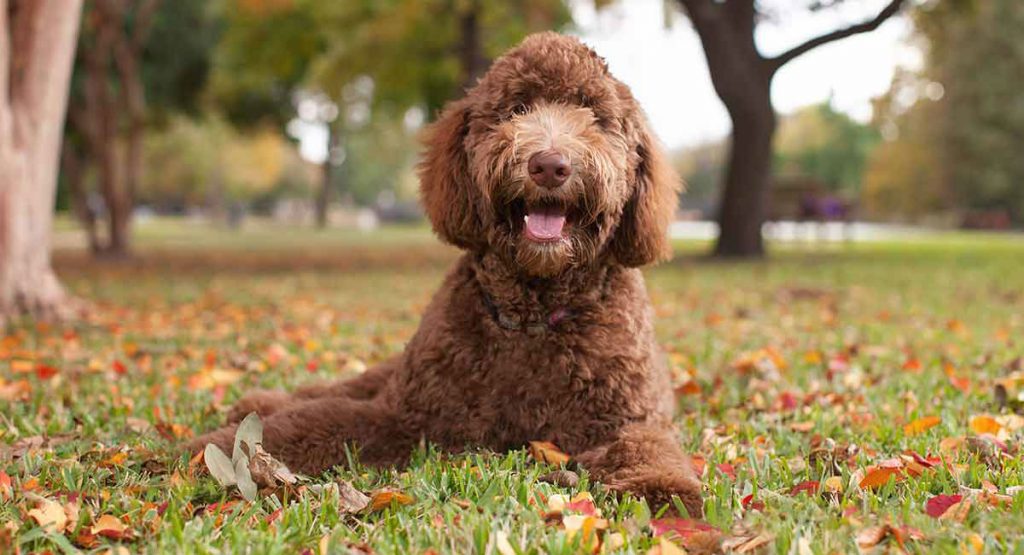
Labradoodles are the first “designer” dog breeds to be ever made and a crossbred of Labrador Retrievers and Poodles.
Develop to have the benefits of both the popular breeds i.e. intelligence, energy and hypoallergenic coat.
This breed has gone up in popularity and so has the complications in ensuring the quality of this breed.
They don’t have a fixed size as it depends on their poodle parent’s size with three main sizes being identified.
Their coat also varies and can be made of either fleece-like, wool, wiry, or wavy hairs.
They are friendly, energetic and intelligent with a love for human company.
Where Labradoodles Came From?
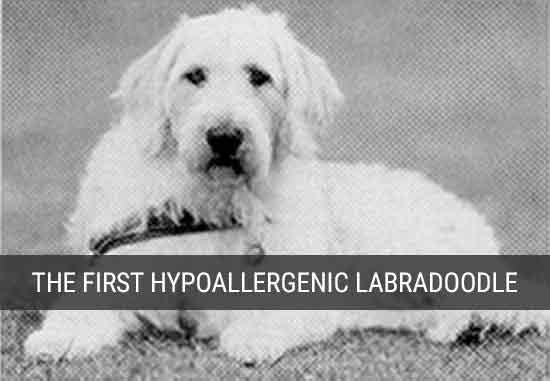
They were first developed in 1988 in Australia by breeder Wally Conron on the request of Royal Guide Dog Association of Australia.
The intent was to create a low shedding dog like Poodle with the gentleness and trainability of a Labrador.
It was to serve as guide dog for those who are allergic to dog fur and danders.
Sultan was the first dog to show all the qualities and served for 10 years in Hawaii to a woman.
Though initially, they weren’t popular but recently they are popular in public as “designer” dogs.
They inspired a trend of crossbreeding pure breeds to create fashionable designer dogs.
Size
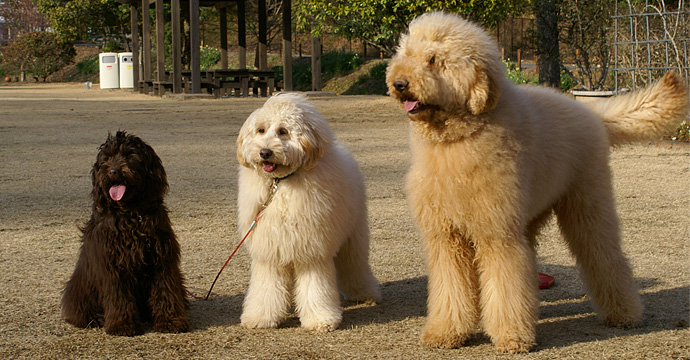
Uncertainty is there in their physical sizes and appearances as no generalization can be made.
Though their heights depend mostly on the height of their Poodle parent or ancestor and therefore have three main sizes.
Miniature, medium and standard are their categories according to their height.
In the case of multigenerational dogs with many Poodle parents or ancestors, even the breeders can’t tell their sizes.
Trainability
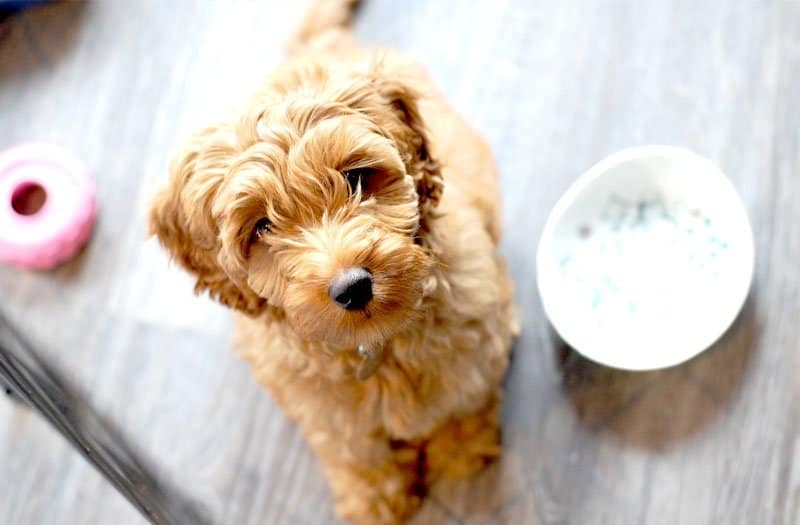
Their high intelligence coupled with ease of training make them very easy to train.
Training them requires patience and positive reinforcements by the owner.
Their genes are once again to be thanked for their easy trainability.
Also their ‘to please’ attitude can be a major factor that benefits the owner in training them.
Grooming
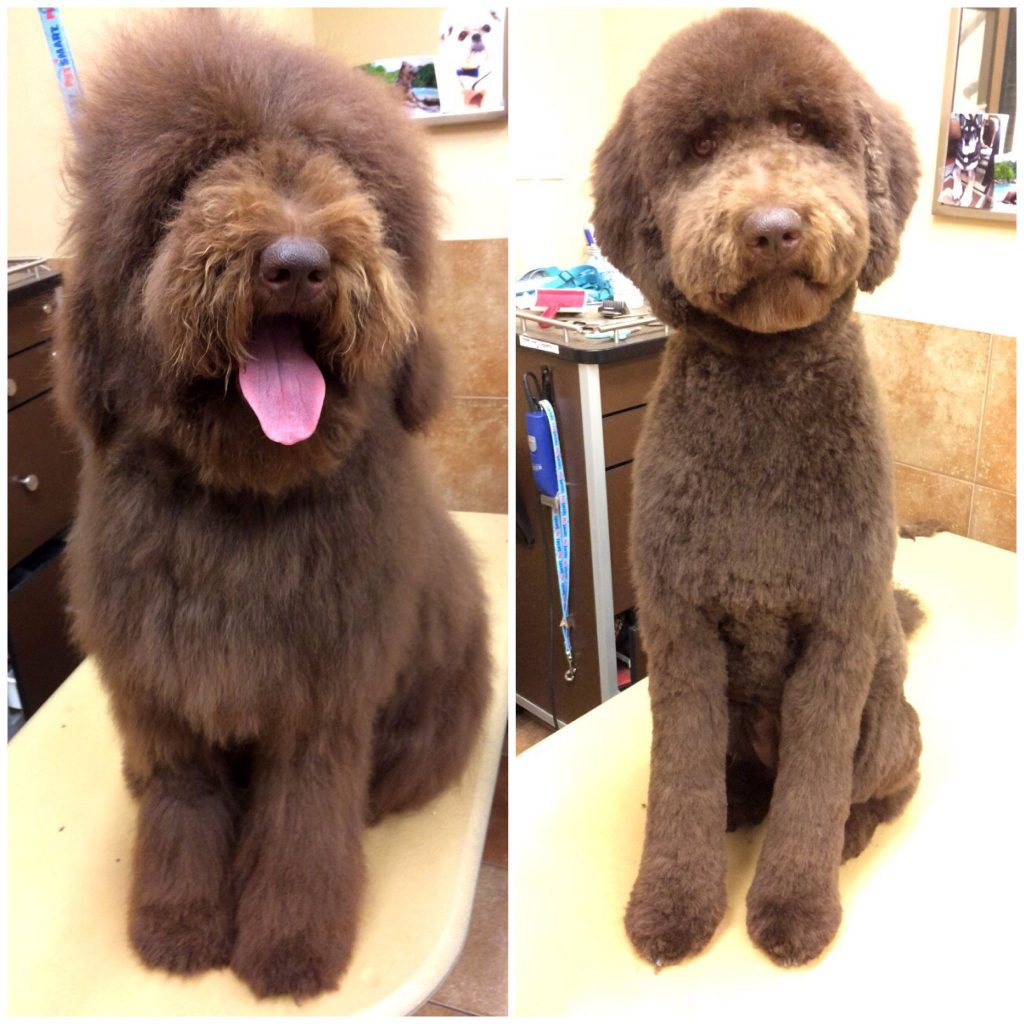
Their coats are also different according to their parent’s coat with wiry, wavy, fleece and wooly as types.
Accordingly, they can either be low shedding or average shedder as not all doodles are hypoallergenic.
They need brushing at least once or twice a day to remove all the dead hair and prevent dirt buildup and tangles.
Their ears need to be cleaned regularly to avoid any fungal or bacterial infections from happening.
Their dental hygiene should also be included in the grooming regime along with nail trimming and cleaning.
Common Diseases
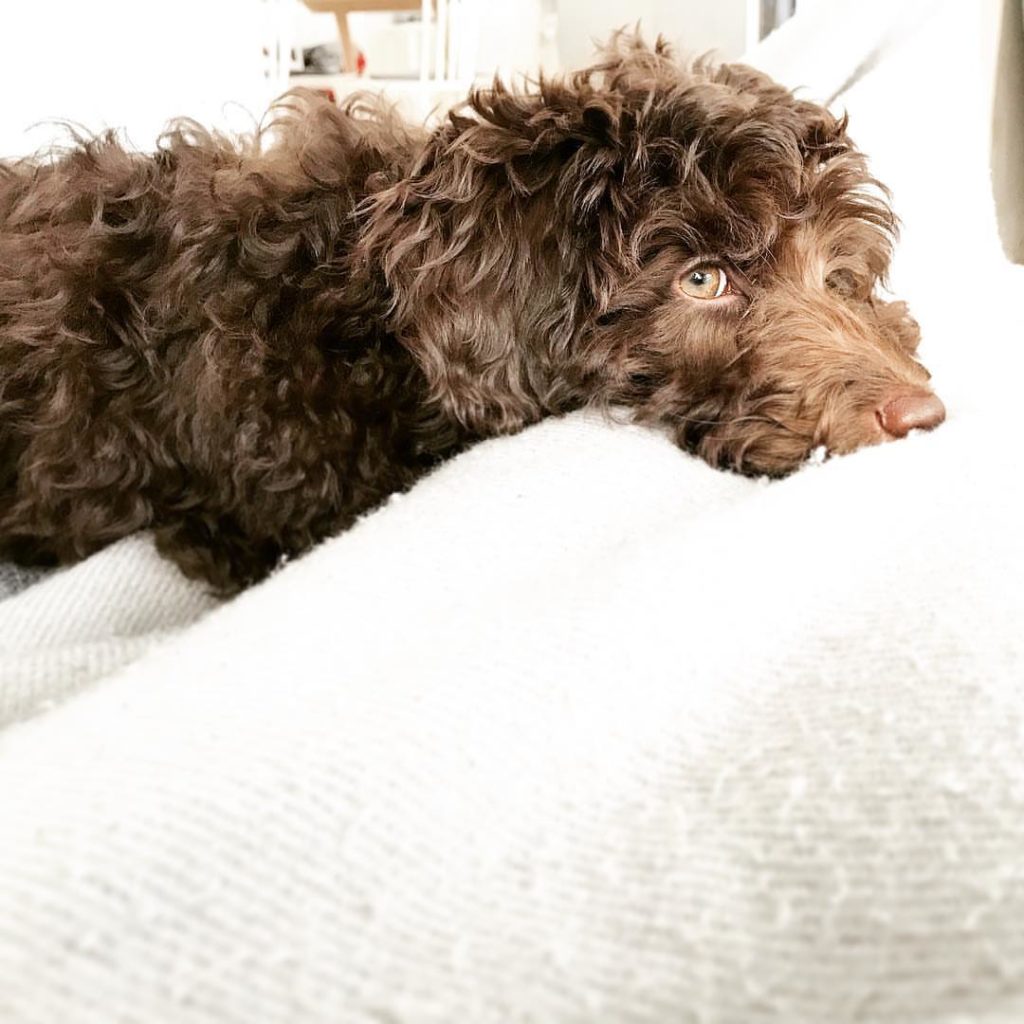
TARGETING THE BONES
- Hip and Elbow Dysplasia:
In this medical condition due to abnormalities in the bone structure, the joints on the hip and the elbow are affected.
The joints don’t have free and easy movements with sometimes pain and lameness seen in their movements.
Dysplasia is treatable by surgery and medicated treatments in severe and painful cases.
Owners should check the medical background of the puppy’s parents so see for the condition.
TARGETING THE NASAL CAVITY
- Allergies:
Dogs sometimes have allergic reactions to some substances present around them with some being inhalant allergies.
These are caused by airborne allergen like pollen, dust, sprays, etc.
Treatments include treating the cause by removing them from near the dog, and medications.
In most cases it isn’t a serious medical condition.
TARGETING THE EYES
- Progressive Retinal Atrophy (PRA):
In this genetic eye disease, the dog slowly goes blind by a general deterioration of the retina.
The day blindness is another advanced stage of this disease with some dogs having full blindness too.
It isn’t curable as of now and a genetic test is the only way to spot this condition.
Owners should also check the medical history of the parents before buying a new puppy.
TARGETING THE BODY
In this medical issue, the body can’t regulate the blood sugar levels resulting in cells not getting sufficient glucose.
Due to this the dog has to eat more for getting the adequate energy to survive.
Excessive drinking of water or urination, increased appetite, and weight loss are some signs of this.
Ensuring proper diet and maintain their insulin level is one way to treat this condition.
- Hypothyroidism:
The disordered activity of thyroid gland that results in epilepsy, obesity lethargy, hair loss, etc. is what this condition is about.
Proper diet and medications are used to keep this condition under check.
Feeding
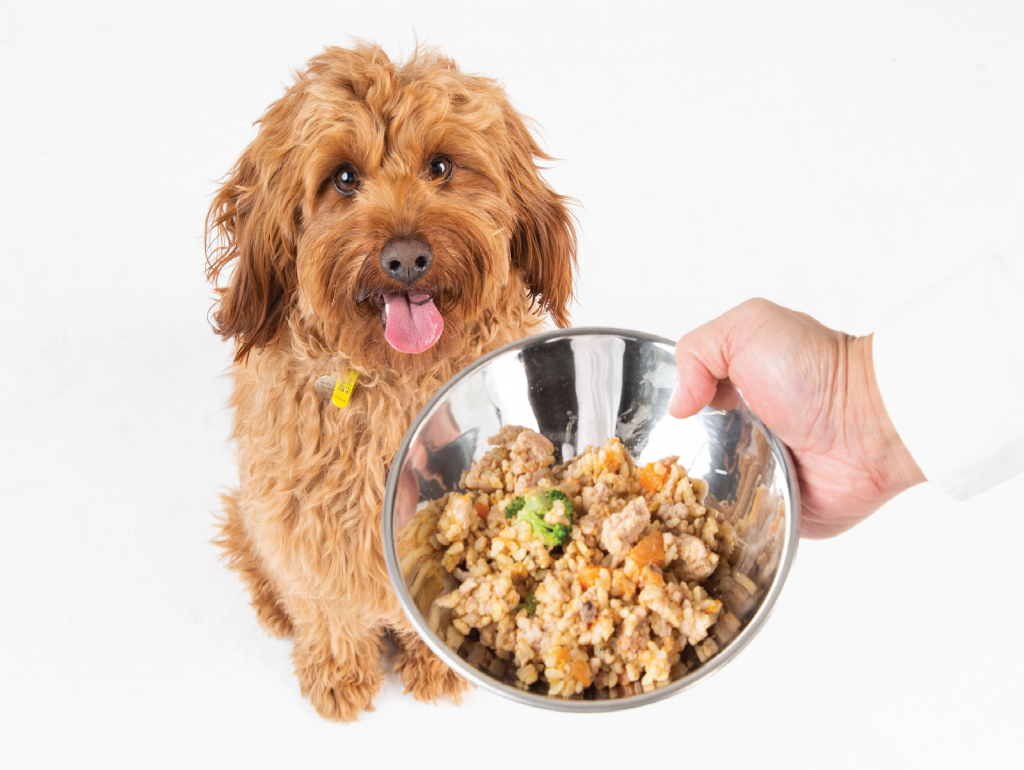
Their feeding depends on their size as they should have food as per their energy burnout which is different as per sizes.
Dogs that are small in size should have more calories and nutrients in their food than regular-sized dogs as they expend a lot of energy per day.
For larger sized Doodles feed should be according to the feed of the big dogs.
Their calorie intake per day should be 1200-1300 if they are active and healthy adult dogs.
Proteins, basically animal proteins, fats along with carbohydrates and vitamins should dominate their food.
A puppy requires feeding more number of times than the adults but may need fewer calories than them.
Suggested: Senior Dog Food
Vaccination and Care

For puppies the vaccinations should be given like this:
| Age | Vaccinations |
| 6-8 weeks | DHPP, Bordetella, Measles |
| 8-12 weeks | DHPP, Coronavirus, Leptospirosis, Bordetella |
| 12-16 weeks | Rabies, DHPP, Coronavirus, Leptospirosis |
As an adult they must be given:
| Time | Vaccines |
| Every 3 years | Rabies |
| Annually | DHLP-P Bordatella y Coronavirus Lyme disease |
Monthly Expense Estimation
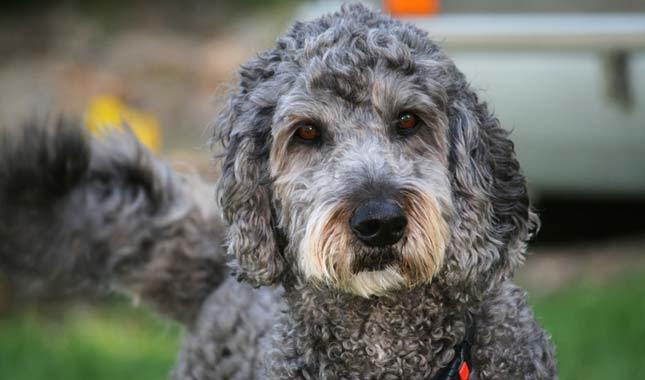
It costs around $100 – $300 a month to take care of them.
These include food, treats, toys and pet insurance for them on a monthly basis, grooming needs, etc.
Some additional costs include pet furniture, vet visits, vaccinations and training and obedience classes for the dog.
Some of them are mandatory cost while others are basically on a dog’s comfort such as beds or toys.
Behavior With
Children
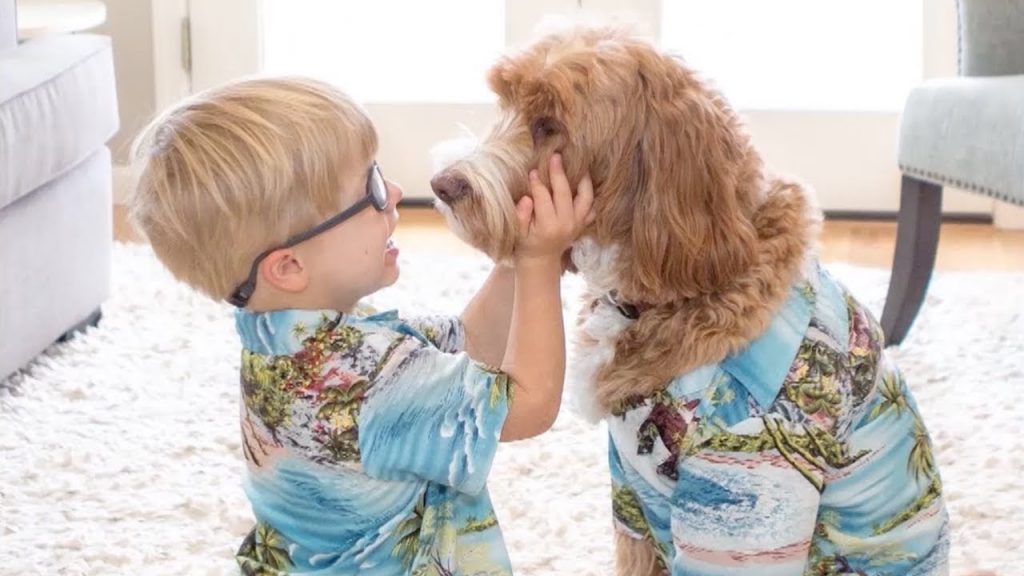
They love to be with children as both have the energetic and active nature.
Due to their friendly and non-aggressive nature, they are also seen as good family dogs by many.
The larger dogs have to be careful though as to not hurt small children with their body.
Dogs
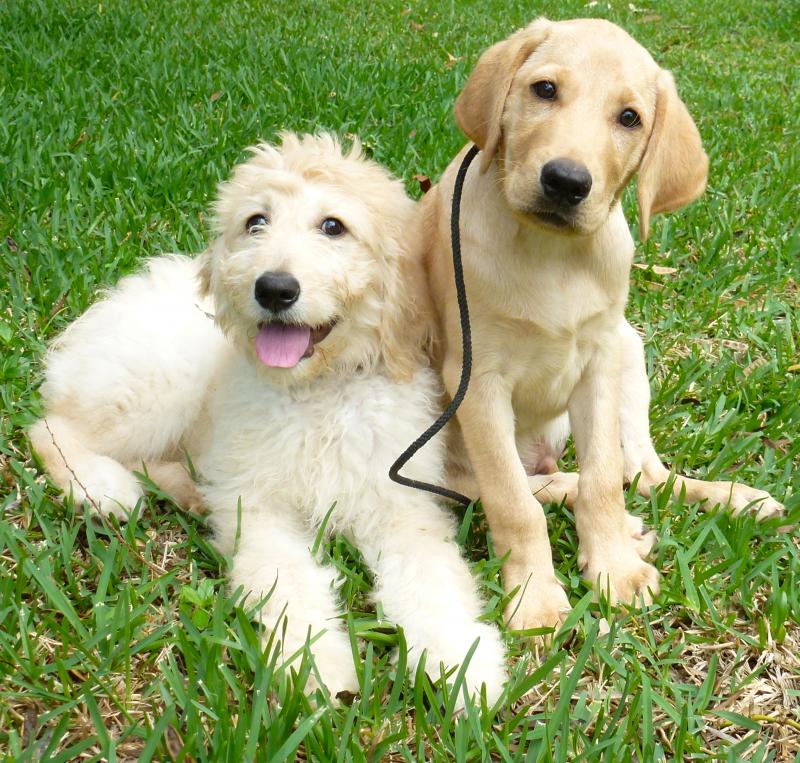
Their friendly nature is also seen with their fast bonding to other dogs.
Here also they get along well and fast to other dogs provided the dogs aren’t intimidating or aggressive.
Cats

An outgoing, energetic family cat can be their best playmate when they accept each other.
For them to be cat-friendly they should be social and know how to behave as all cats are not dog-friendly.
Overview

Labradoodles are friendly, active and gentle designer dog breed made in Australia.
Since they are crossbreeds there is no confirmation as to what qualities they will have when they grow up.
Their physical size somewhat depends on the Poodles involved in the breeding process.
Their nature is reflective of the breed they are more inclined to.
Their original purpose was to serve as guide dogs for blind people, but now they also act as family and therapy dogs.
Something Fun
- Jennifer Aniston, Tiger Woods and Norwegian Prince and Princess have a Labradoodle wagging his tail in their respective houses.
- One Labradoodle recently proved that it can travel two counties to find its way home. It skipped 6-feet-tall fence and traveled 12 miles to find his parents.
- Labradoodle gives birth to 4 to 15 babies (8 on average).
This was all about this adorable designer dog breed from our side.
In case you have anything to add feel free to comment below.
Happy petting to you!





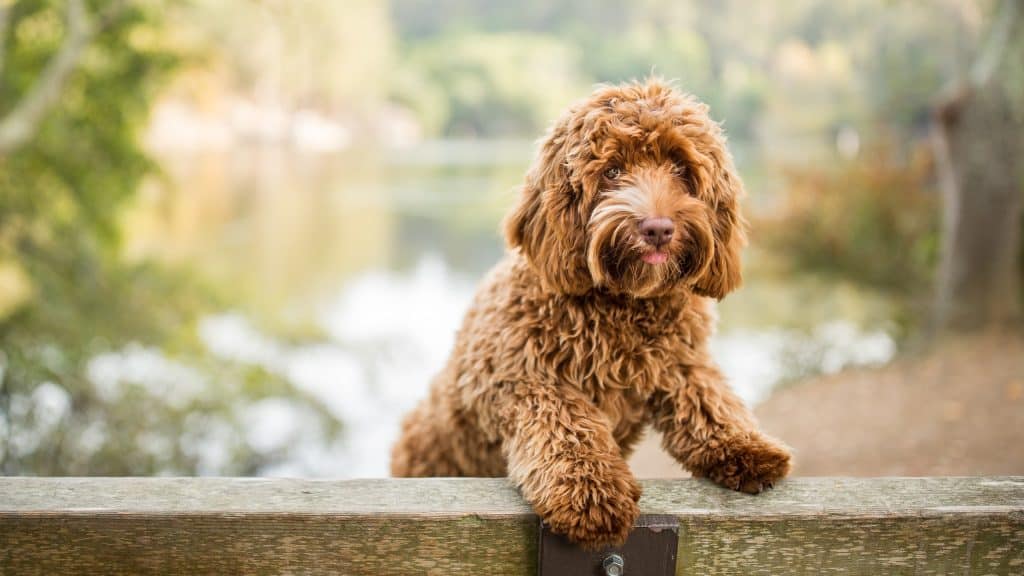

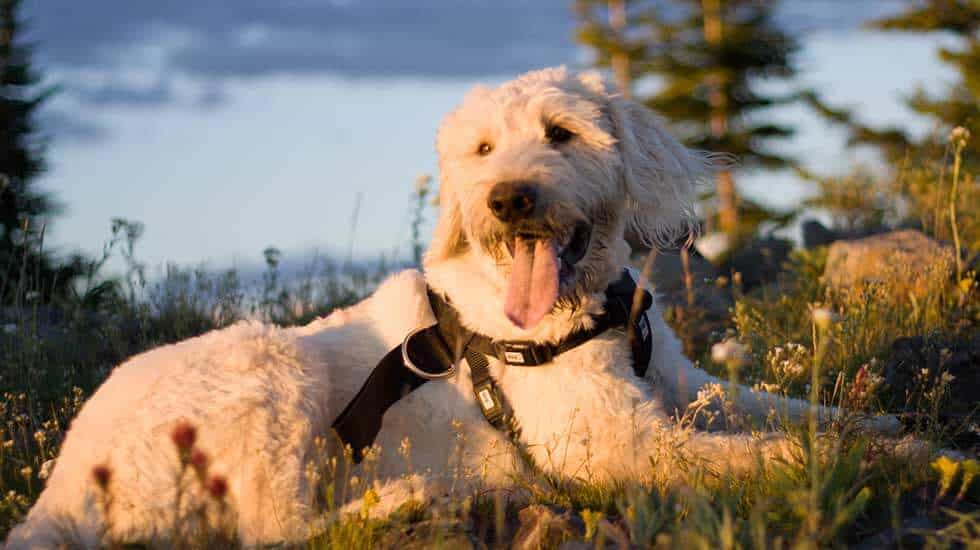
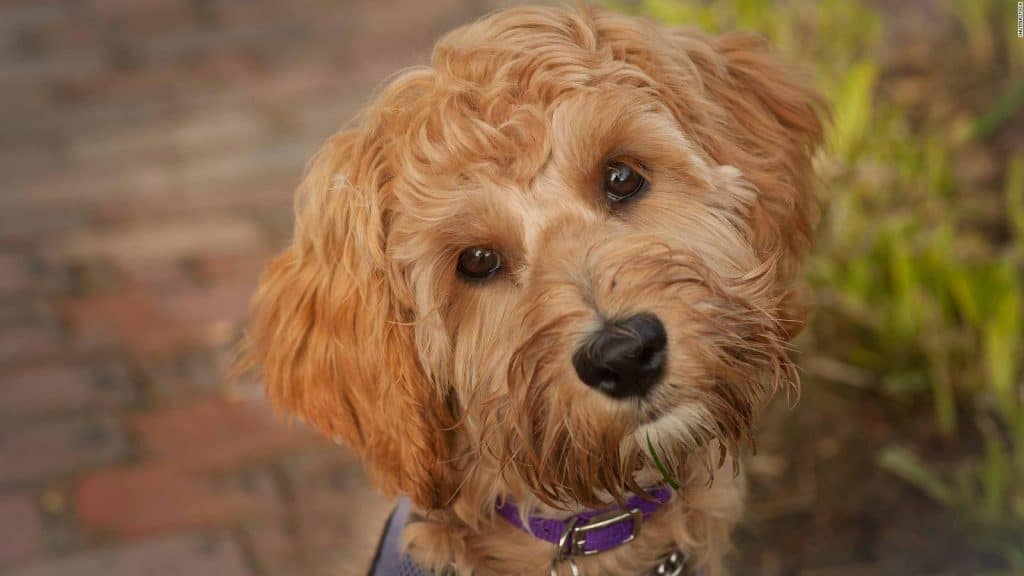








[…] Labradoodles are highly intelligent and affectionate dogs. Their characteristics also make them very useful for various household chores. […]
A labradoodle from Australia and a Turkish water dog from Andalucía look very much a like.Also in behaviors.
Do they have any connection?